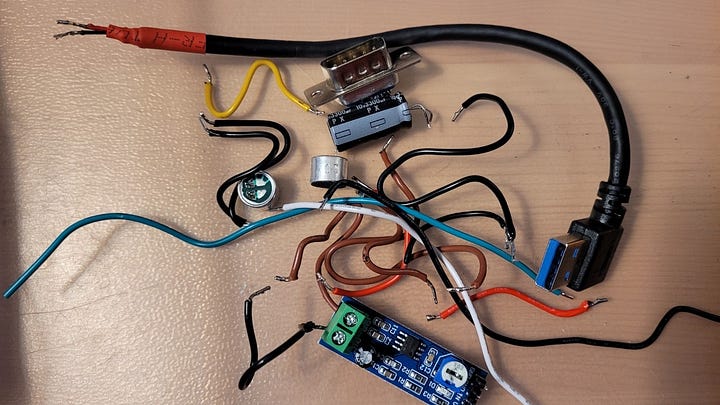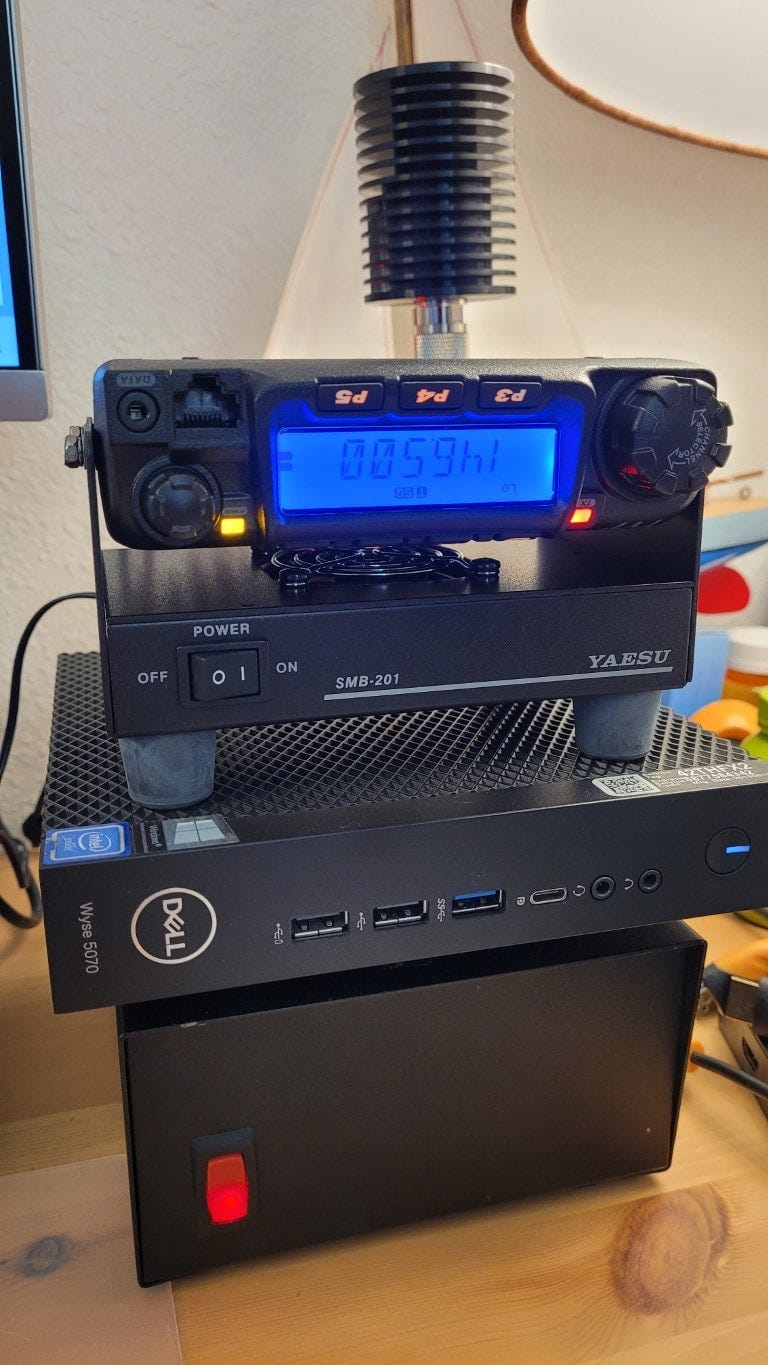I/O: Odds and Ends
A little DMR, some radio-less and RF AllStar nodes, and site/miscellaneous items
DMR Bit Error Rate Adjustment
I was seeing unusually high bit error rate (BER) values for my AnyTone HT via a hotspot. What does “unusual” mean? Seeing several percent BER!
I made adjustments to the RX frequency per the easy-to-follow instructions at https://www.miklor.com/DMR/DMR-BER.php and once I got BER down to 0.2%, I adjusted the TX frequency to match. Then I tested several more times by transmitting to a DMR Parrot and found the BER remained at 0.2% or less. I’m satisfied with that.
Radio-less AllStar Node
Soldering
My soldering skills are getting better but could still improve. I’ve developed better techniques in five (yes, five!) attempts to build a small radio-less AllStar node.
Finally, I deconstructed build #5 and laid out the basic parts for a fresh attempt at this build.


I will probably purchase an already-built node from AllScan.info and, when time permits, work on building another node just like it.
My two “go to” nodes
Also, I’ve become most comfortable with two of my radio-less nodes: node 57945 on a Vultr.com server in Seattle, and 588411 on a Dell Wyse 3040 thin client mounted vertically under my Portland desk. The 3040 thin client platform has been very stable in operation.
When I’m at my Olympia office, I use node 57945 through a Cisco SPA303 IP phone, connected via Hamshack Hotline. In Portland, I use both nodes through a Cisco SPA525G IP phone. I like the audio quality on the IP phones and usually listen through the speakerphone, but sometimes I’ll use headphones to not disturb others.
The SPA525G also connects to my smartphone through Bluetooth so I am able to make and take cellular phone calls from my desk phone. I added a 500S expansion module to the 525G and programmed a bunch of buttons to give me one-press dialing of my most frequent contacts.
Both IP phones have Hamshack Hotline set up on them. The SPA525G also has a Hams Over IP line.
RF AllStar Node
The TYT TH-9000D radio gets hot during long nets. I have a Yaesu SMB-201 cooling fan on the way. My plan is to mount the TYT radio upside down on the fan unit since the radio’s cooling fins are on top of the radio in the usual orientation. That should provide the most effective cooling for the radio.
Two sources for the SMB-201 are DXEngineering and Ham Radio Outlet. I lean toward patronizing HRO because they have a brick-and-mortar store relatively near me, but I make sure to spread the wealth around to other vendors, too.
Update: the TYT radio slots into the SMB-201 perfectly. Here’s what it looks like on my desk:
Site/Miscellaneous Items
Custom domain name for my Substack blog
I noticed that Steve Stroh N8GNJ is transitioning his great Zero Retries blog on Substack to a custom domain. Good idea, I thought to myself, so I’m following his lead. RandomWire will soon be available at https://www.randomwire.us. It’s always interesting to see how quickly (or not!) a new domain name propagates around the world; I usually check domains at https://www.whatsmydns.net/.
NextDNS
I recently referenced switching my home internet DNS to NextDNS. That change has been essentially seamless except for Paramount+ streaming. That particular service has quite a few extra riders coming in on the stream. I’m using NextDNS on the home router and on our smartphones. Few complaints have been heard although I do notice some questionable links take a bit longer to resolve, but I chalk that up to welcome protection.




